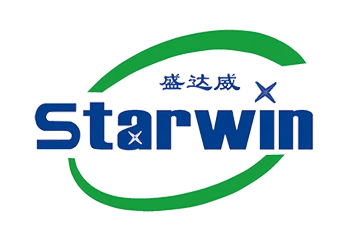What is the difference between carbon black and activated carbon
Jul 21, 2021
1) Different concepts
Carbon black
Carbon black, also known as carbon black, is an amorphous carbon. Light, loose and very fine black powder with a very large surface area ranging from 10~3000m2/g. It is a carbonaceous material (coal, natural gas, heavy oil, fuel oil, etc.) that undergoes incomplete combustion or thermal decomposition under insufficient air conditions. And the product. The proportion is 1.8-2.1. Those made of natural gas are called "gas black", those made of oil are called "lamp black", and those made of acetylene are called "acetylene black".
Activated carbon
Activated carbon is a specially treated carbon that heats organic raw materials (husks, coal, wood, etc.) in the absence of air to reduce non-carbon components (this process is called carbonization), and then reacts with gas, and the surface is Corrosion produces a structure with well-developed micropores (this process is called activation).
Because the activation process is a microscopic process, that is, the surface erosion of a large number of molecular carbides is point erosion, so the activated carbon surface has countless small pores.
2) Different in nature
Carbon black
The production process of carbon black is different, the chemical properties of the surface are also different. The true surface area of most carbon blacks is greater than the geometric surface area calculated from the particle size. This is due to the presence of many micropores on the surface of carbon black, especially carbon black with a particle size of less than 25nm.
According to analysis, groups such as phenolic, quinone, and carboxyl groups can be detected on the surface of carbon black. The concentration of these acidic groups is particularly high on the surface of gas black and furnace black. The pyrone structure can be detected in furnace black, which determines the basic nature of furnace black.
Volatile content can judge the concentration of surface functional groups, and can also measure the polarity of carbon black. In addition, due to the large surface area of carbon black, it is easy to absorb moisture in the volatile environment, so special attention should be paid to moisture absorption during transportation, storage and use of carbon black.
Activated carbon
Activated carbon is composed of three parts: graphite microcrystals, single plane network carbon and amorphous carbon. Graphite microcrystals are the main part of the activated carbon. The microcrystalline structure of activated carbon is different from the microcrystalline structure of graphite. The interlayer spacing of the microcrystalline structure is between 0.34 nm and 0.35 nm, and the gap is large.
Even if the temperature is higher than 2000 ℃, it is difficult to convert into graphite. This kind of microcrystalline structure is called non-graphite microcrystalline, and most of the activated carbon is of non-graphite structure. The graphite-type structure has a regular arrangement of crystallites and can be converted into graphite after treatment.
3) Different categories
Carbon black
According to different uses, carbon black is usually divided into carbon black for pigments, carbon black for rubber, conductive carbon black and special carbon black.
Carbon black for pigments—Internationally, according to the coloring ability of carbon black, it is usually divided into three categories, namely, high-pigment carbon black, medium-pigment carbon black and low-pigment carbon black. This classification is usually represented by three English letters, the first two letters indicate the coloring ability of carbon black, and the last letter indicates the production method.
Carbon black for rubber—Carbon black for rubber was originally classified by particle size, but later changed to be classified by nitrogen surface area. In addition, factors such as the vulcanization speed and structure of the carbon black pigment are also taken into consideration when naming, and it consists of four systems. The first English letter represents the vulcanization speed of the rubber compound, N represents the normal vulcanization speed, and S represents the slow vulcanization speed.
The last 3 are Arabic numerals. The first number represents the range of carbon black nitrogen surface area, which is listed in 0-9 grades. The second and third numbers are designated by the American Society for Testing and Materials Committee D24.41, which is responsible for carbon black and terminology. They reflect different structural levels, that is, the approximate structure of carbon black is determined, and there is a certain degree of arbitrariness. Relatively speaking, the higher the number, the higher the structure.
Activated carbon
Activated carbon is divided into four categories according to the main raw materials used in manufacturing: coal-based activated carbon, wooden activated carbon, synthetic activated carbon and other types of activated carbon. It is classified into 16 types according to the main raw materials used in manufacturing and the corresponding product shape combination.
Among them, coal-based activated carbon is divided into: columnar coal-based granular activated carbon, crushed coal-based granular activated carbon, powdered coal-based granular activated carbon, and spherical coal-based granular activated carbon. Wood particle activated carbon is divided into: columnar wood particle activated carbon, broken wood particle activated carbon, powder wood particle activated carbon, spherical wood particle activated carbon.
Synthetic material activated carbon is divided into: columnar synthetic material granular activated carbon, crushed synthetic material granular activated carbon, powdered synthetic material granular activated carbon, shaped activated carbon, spherical synthetic material granular activated carbon, cloth synthetic material activated carbon (carbon fiber cloth), felt synthetic material Activated carbon (carbon fiber felt).
Other types of activated carbon refer to activated carbon prepared from other raw materials (such as coal pitch, petroleum coke, etc.) in addition to the above three types of activated carbon. For this type of activated carbon, pitch-based microsphere activated carbon is temporarily listed in the product shape classification.






